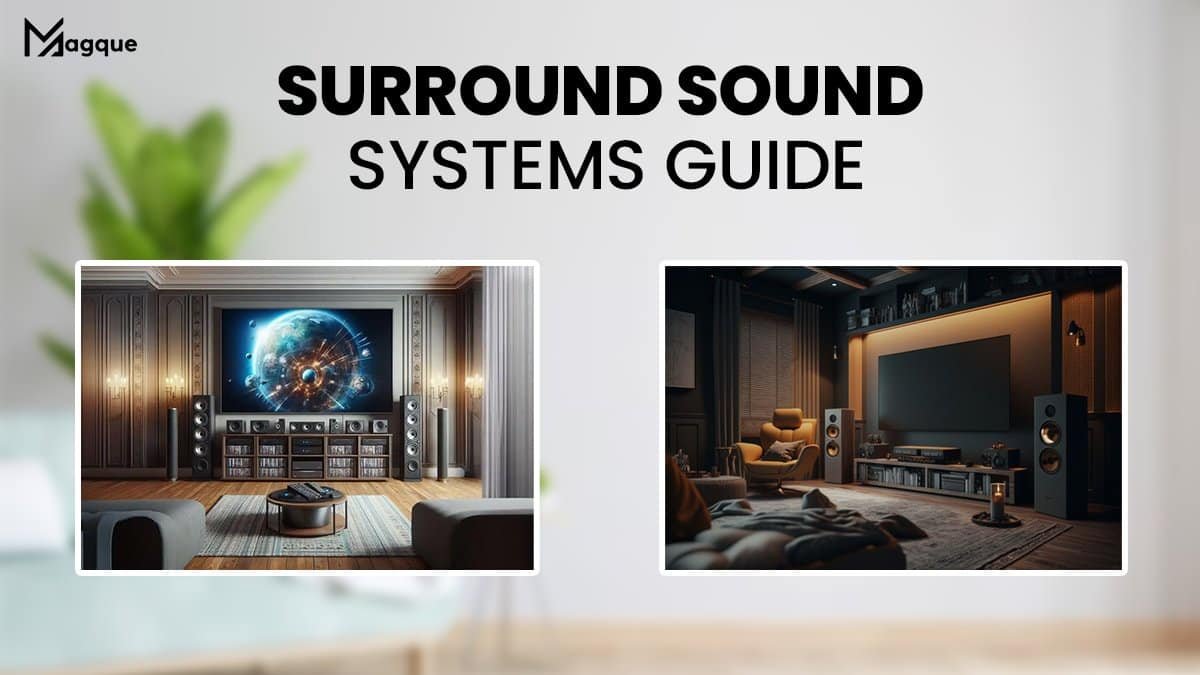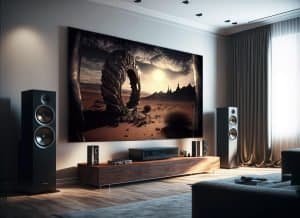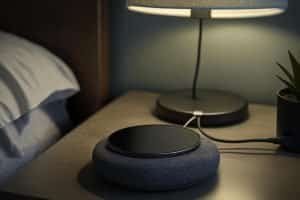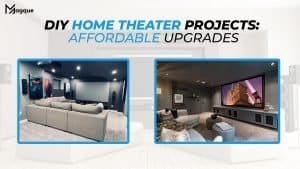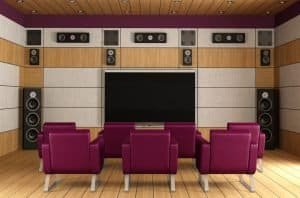Hey there, audio enthusiasts! Are you ready to take your sound game to the next level? If so, you’ve come to the right place. Today, we’re diving into the beautiful world of surround sound systems. Whether you’re a movie buff, a gaming fanatic, or a music lover, a top-notch surround sound setup can transform your entertainment experience. So, buckle up and get ready to discover everything you need to know about these immersive audio setups.
What Exactly is Surround Sound?
Let’s start with the basics. Surround sound is a technique that creates a multidimensional audio experience by using multiple speakers placed strategically around a room. This setup allows sound to come from various directions, mimicking how we hear. Instead of just hearing audio from one direction (like traditional stereo setups), surround sound systems envelop you in a 360-degree auditory environment, pulling you deeper into whatever you’re watching or listening to.
Critical Components of a Surround Sound System
Now that you understand the concept, let’s break down the essential components of a surround sound setup:
- Speakers: These are the heart and soul of your system. Surround sound setups typically have multiple speakers, including front, center, rear, and subwoofer units. Each speaker plays a specific role in delivering different aspects of the audio, creating a rich and immersive soundstage.
- Receiver: Think of the receiver as the brain of your system. It’s responsible for processing audio signals from your sources (like your TV, Blu-ray player, or gaming console) and distributing them to the appropriate speakers. For the best experience, make sure to choose a receiver that supports the latest audio formats.
- Subwoofer: Want to feel those booming bass notes reverberating through your bones? The subwoofer is the answer. This specialized speaker reproduces low-frequency sounds, adding depth and impact to your audio.
- Cables and Connectors: Quality cables and connectors are crucial. Connecting your speakers to your receiver ensures optimal audio performance and eliminates annoying buzzing or interference.
Types of Surround Sound Systems
Surround sound setups come in various configurations, each offering its unique benefits:
- 5.1 Channel: This is the most common setup, consisting of five main speakers (front left, front right, center, rear left, and rear right) plus a subwoofer. It’s perfect for smaller rooms and provides a solid surround sound experience for most users.
- 7.1 Channel: A 7.1 channel system adds two additional rear speakers to the mix for those craving even more immersion. This configuration delivers a more spacious soundstage for larger rooms or dedicated home theaters.
- Dolby Atmos: The pinnacle of surround sound technology, Dolby Atmos takes things to the next level by adding overhead speakers. This creates a three-dimensional audio experience, with sound from above and around you.
Tips for Setting Up Your System
Now that you’ve all the pieces, it’s time to assemble them. Here are some tips to ensure a smooth setup process:
- Optimal Speaker Placement: Take the time to position your speakers correctly for the best possible sound. Refer to your system’s manual for guidance on placement, or experiment with different configurations to find what works best for your space.
- Calibration: Most modern receivers have automatic calibration systems that help optimize audio settings based on your room’s acoustics. Take advantage of these features to fine-tune your sound for maximum impact.
- Test and Adjust: Once everything is set up, don’t be afraid to experiment with different settings and configurations. Trust your ears and make adjustments until you’re happy with the results.
Conclusion
And there you have it, folks – your ultimate guide to surround sound systems. Whether you’re a casual listener or a hardcore cinephile, investing in a quality setup can elevate your audio experience. So, why settle for mediocre sound when you can immerse yourself in a world of crystal-clear highs, thunderous lows, and everything in between? Upgrade your setup today and prepare to be blown away! And be sure to explore Magque, your go-to source for the latest and most intriguing updates in the realms of informative tips & reviews!
FAQs
1. What is the difference between stereo and surround sound systems?
Stereo systems typically have two speakers, providing left and right audio channels. Surround sound systems, on the other hand, utilize multiple speakers around a room to create a more immersive audio experience, with sound coming from various directions.
2. Do I need a particular room for a surround sound system?
While a dedicated home theater room can enhance the surround sound experience, it can be optional. Surround sound systems can be tailored to fit any living room, bedroom, or even a tiny apartment. Proper speaker placement and calibration are crucial to optimal performance in any environment.
3. What is Dolby Atmos, and is it worth the investment?
Dolby Atmos is an advanced audio technology that adds overhead speakers to a traditional surround sound setup, creating a three-dimensional soundstage. While it requires compatible equipment and content, many users find the immersive experience well worth the investment, especially for movie enthusiasts and gamers.
4. Can I use a surround sound system with my existing TV or audio setup?
Yes, most surround sound systems are compatible with a wide range of audio and video sources, including TVs, Blu-ray players, gaming consoles, and streaming devices. Connect your devices to the receiver using HDMI or optical cables, and you’re ready to enjoy immersive audio.
5. How do I troubleshoot common issues with my surround sound system?
Suppose you’re experiencing issues like no audio, distorted sound, or speaker connectivity problems. In that case, there are a few troubleshooting steps you can try. Check your connections to ensure everything is properly plugged in, adjust speaker settings on the receiver, and ensure your audio sources are configured correctly. If problems persist, consult the user manual or contact technical support.
Read Also This:- Wireless Surround Sound Systems Review







